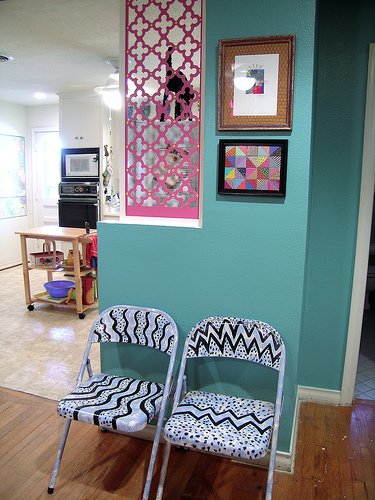
Painted clay figurines in Fengxiang County, Shaanxi Province, China bears a extended history. It is stated that the figurines were developed by soldiers from Jiangxi Province. Throughout the Ming Dynasty (1368-1644A.D), Emperor Taizu’s army was stationed in Fengxiang. Most of the soldiers in the army had been from Jiangxi Province. Later, they settle down at the place and the methods of creating clay figurines were thus carried on. Even today, the key production base of painted clay figurines is Liuying (the sixth battalion) Village, which was named after the military unit in the Ming Dynasty. All the farmers in the village are capable of producing clay figurines, so they always make some clay toys and ornaments as gifts at the slack seasons of farming. After years of improvement, the tactics of making painted clay figurines have been achieved.
The painted clay figurines exclusively reveal the neighborhood life through their sophisticated designs and vivid shapes. The artisans use practically everything they can lay their hands on as their subject matters: opera facial make-ups, auspicious patterns, folklores, historic stories, native rural life and so on. The figurines can be divided into 3 categories: hanging ornaments, desk ornaments and toys. The figurines show a lot of simplicity and exaggeration, vividness and uniqueness. Vibrant colors, mainly red, green and yellow, are mostly adopted. The sketches on the figurines are drawn with black ink and the patterns are painted with straightforward strokes. The figurines are made of clay mixed with pulp. After they come out of the moulds and turn out to be dry, a base color of white is painted all over. Then, other colors are added and the surface is polished smooth.
The Fengxiang figurines are used as toys and symbols of very good fortune and happiness. When the Lunar New Year and other traditional festivals draw near, regional handicraftsmen carry the beautifully painted clay figurines to the local markets and set up stalls in meandering lines, which often make the county fair much more flourishing and dazzling throughout the festival.
As the standard articles of Chinese folk art, the Fengxiang painted clay figurines not only attract the focus of artists, but also appeal significantly to vacationers each from residence and abroad. If you have an opportunity to check out Xian or its nearby county – Fengxiang, there is an essential point you should not overlook to do it – check out the local figurine workshops and discover how to make a figurine from the folk artisans!
Note:
Emperor Taizu: the 1st emperor of the Ming Dynasty (1368-1644). His name is Zhu Yuan Zhang (1328-1398).
